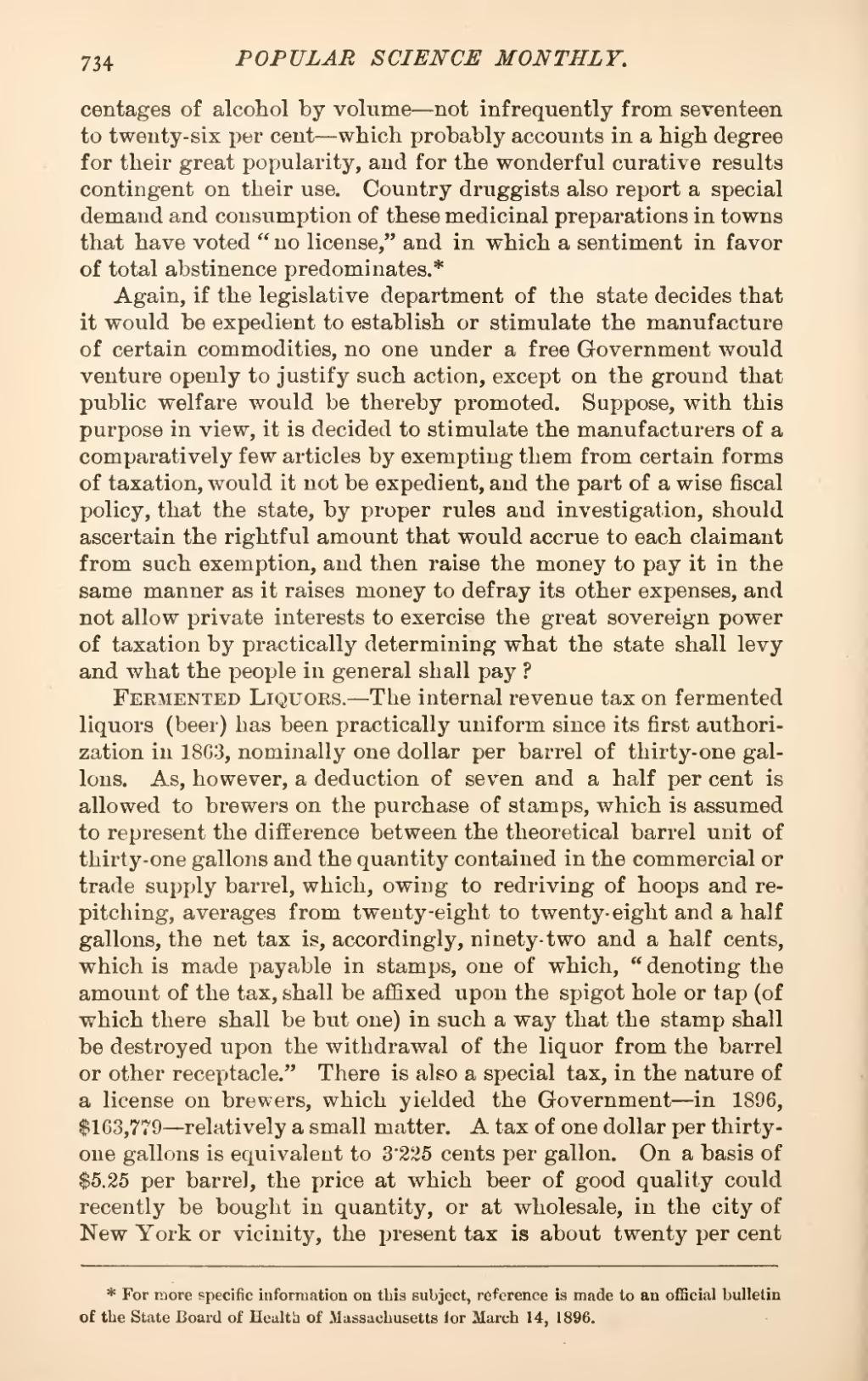centages of alcohol by volume—not infrequently from seventeen to twenty-six per cent—which probably accounts in a high degree for their great popularity, and for the wonderful curative results contingent on their use. Country druggists also report a special demand and consumption of these medicinal preparations in towns that have voted "no license," and in which a sentiment in favor of total abstinence predominates.[1]
Again, if the legislative department of the state decides that it would be expedient to establish or stimulate the manufacture of certain commodities, no one under a free Government would venture openly to justify such action, except on the ground that public welfare would be thereby promoted. Suppose, with this purpose in view, it is decided to stimulate the manufacturers of a comparatively few articles by exempting them from certain forms of taxation, would it not be expedient, and the part of a wise fiscal policy, that the state, by proper rules and investigation, should ascertain the rightful amount that would accrue to each claimant from such exemption, and then raise the money to pay it in the same manner as it raises money to defray its other expenses, and not allow private interests to exercise the great sovereign power of taxation by practically determining what the state shall levy and what the people in general shall pay?
Fermented Liquors.—The internal revenue tax on fermented liquors (beer) has been practically uniform since its first authorization in 1863, nominally one dollar per barrel of thirty-one gallons. As, however, a deduction of seven and a half per cent is allowed to brewers on the purchase of stamps, which is assumed to represent the difference between the theoretical barrel unit of thirty-one gallons and the quantity contained in the commercial or trade supply barrel, which, owing to redriving of hoops and repitching, averages from twenty-eight to twenty-eight and a half gallons, the net tax is, accordingly, ninety-two and a half cents, which is made payable in stamps, one of which, "denoting the amount of the tax, shall be affixed upon the spigot hole or tap (of which there shall be but one) in such a way that the stamp shall be destroyed upon the withdrawal of the liquor from the barrel or other receptacle." There is also a special tax, in the nature of a license on brewers, which yielded the Government—in 1896, $163,779—relatively a small matter. A tax of one dollar per thirty-one gallons is equivalent to 3·225 cents per gallon. On a basis of $5.25 per barrel, the price at which beer of good quality could recently be bought in quantity, or at wholesale, in the city of New York or vicinity, the present tax is about twenty per cent
- ↑ For more specific information on this subject, reference is made to an official bulletin of the State Board of Health of Massachusetts for March 14, 1896.
